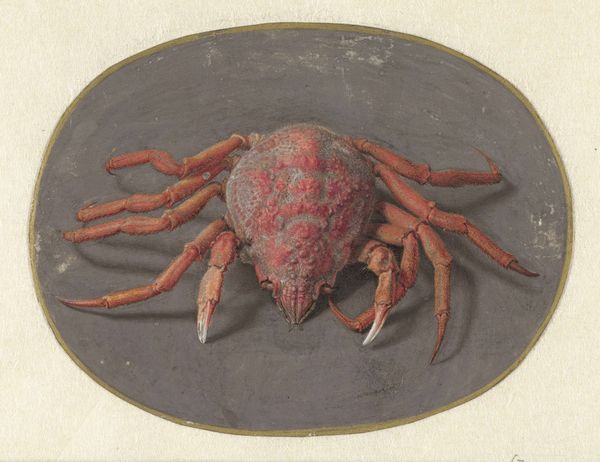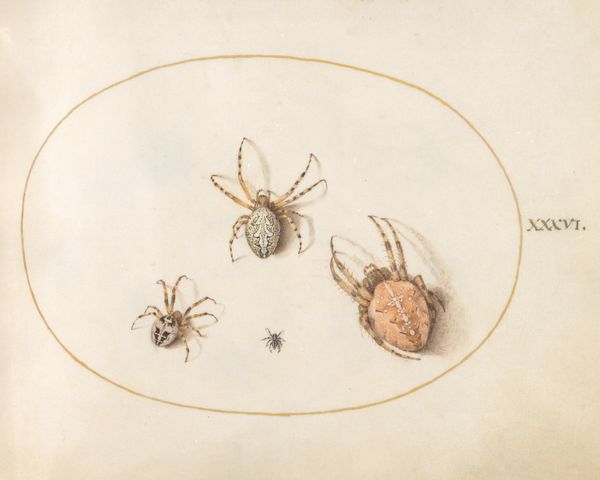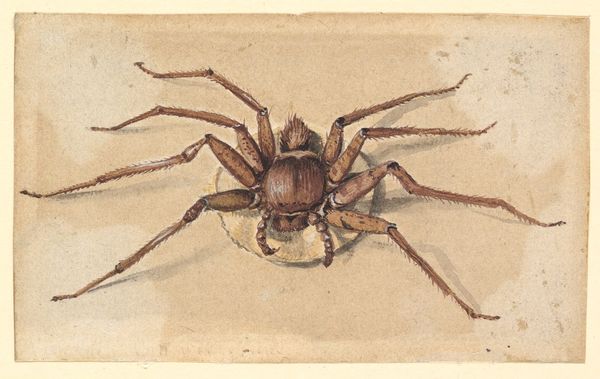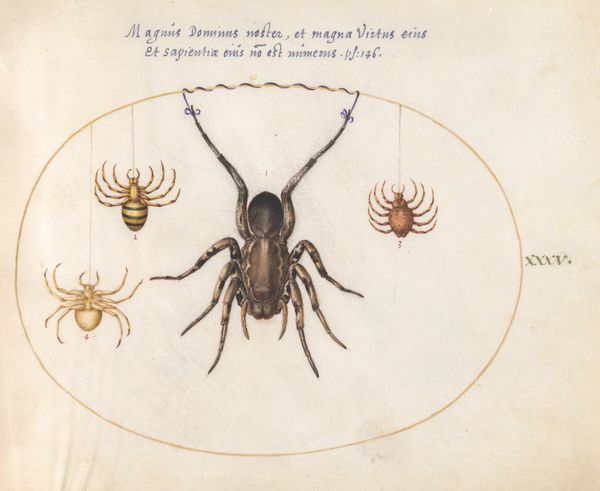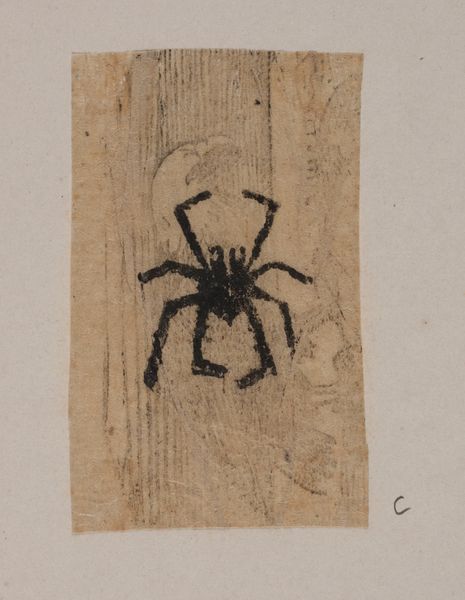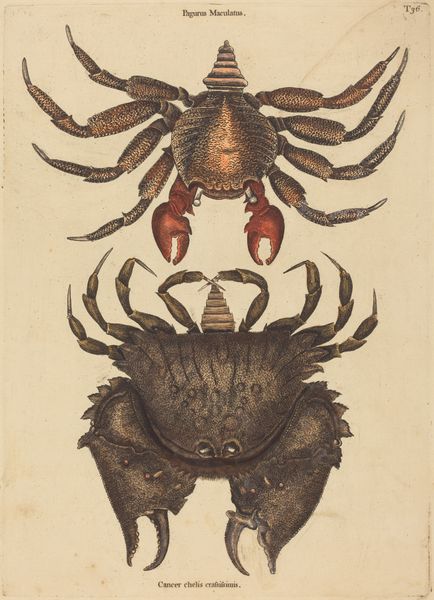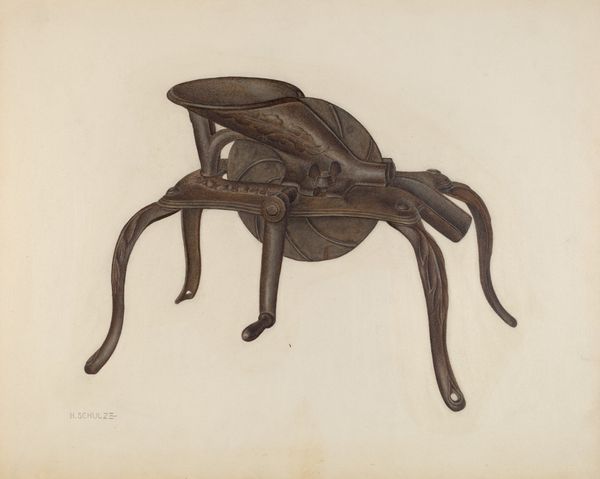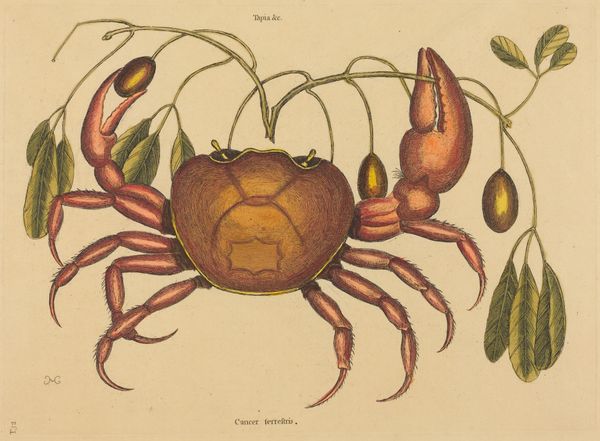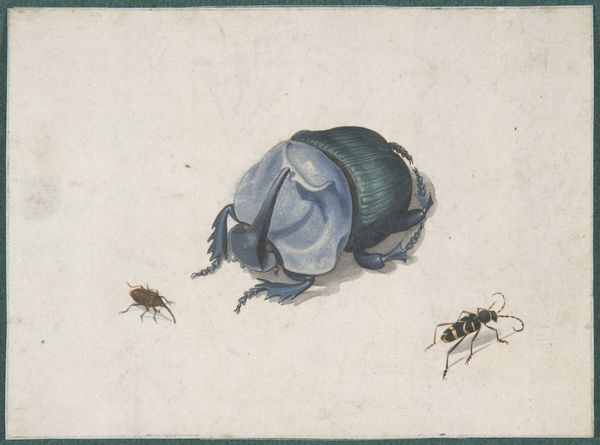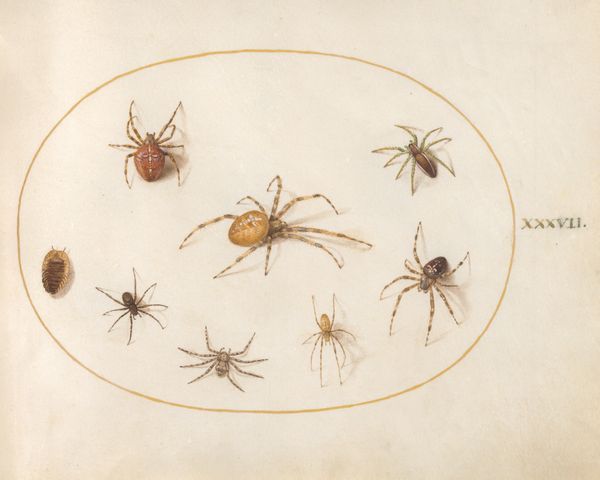
drawing, watercolor
#
drawing
#
watercolor
#
coloured pencil
#
realism
Dimensions: height 41 mm, width 51 mm
Copyright: Rijks Museum: Open Domain
Editor: So, this drawing, called "Spider," is by Jan Augustin van der Goes, dating back to sometime between 1690 and 1700, created using watercolor. It’s remarkably detailed, quite captivating even if I’m usually not a fan of spiders. How would you interpret this work? Curator: Well, within the socio-political context of the late 17th century, scientific curiosity was rapidly expanding. Depictions like these weren't just artistic exercises. How do you think such a work might have been perceived at a time when natural science was becoming increasingly important? Editor: Hmm, as almost a scientific record then? Almost like an illustration for a naturalist's notebook? Curator: Precisely. Furthermore, the artistic choice to portray the spider in such detail reflects a shift towards valuing empirical observation. This realism was heavily influenced by the rise of scientific societies. Could it be argued then that art started serving a different public purpose during this time? Editor: That's interesting, the rise of these scientific societies and the scientific revolution happening must have pushed the purpose of art toward something more factual and illustrative instead of just being symbolic or religious? Curator: Yes, the role of art in shaping public perception of the natural world cannot be understated. Do you see parallels to contemporary art that seeks to address ecological issues, perhaps? Editor: Absolutely! Thinking about it that way helps to link its function then to the role art plays now in education and social commentary. Thank you for making that connection. Curator: Indeed. It’s fascinating how this single image can reveal the changing function of art in society.
Comments
No comments
Be the first to comment and join the conversation on the ultimate creative platform.
